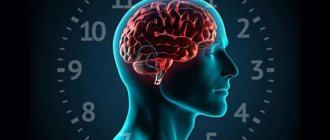It’s scary to think that one day you might lose control over your own thoughts, actions, or do something beyond the control of your conscious mind.
Dissociative identity disorder causes a reverse reaction: the patient commits actions, sometimes illegal, lives several lives simultaneously, but his main personality is not aware of these metamorphoses. The disease exhibits unique abilities, at the same time it is a way of protecting the individual from super-emotional stress, and a mental illness that causes complete disorganization, splitting of the patient’s consciousness, and loss of identity. Particularly dangerous is the onset of complete anarchy in an individual’s behavior, the lack of ability to control oneself.
What is known about the disease
To some, this disease may initially seem unknown. However, mentioning that the disorder is better known as split personality disorder or multiple personality will make things a little clearer.
Indeed, DID manifests itself as a division of the patient’s consciousness. Simply put, it’s as if several people live in it at once.
The disease is considered quite rare, although since the 1980s there has been a significant increase in its carriers. Officially, the disease is called “dissociative identity disorder” according to DSM-5, which sounds more correct than the previously accepted multiple personality disorder. Split or multiple personality are rather common names.
Interestingly, some people do not consider double consciousness to be a pathology. For example, writer Trudy Chase, who suffers from this disease, admits to having several personalities of her own, born after suffering violence. The woman claims that all identities interact quite harmoniously. Truddy rejects the pathological nature of his behavior, considering it a natural state of consciousness.
It’s not just ordinary people who disagree with the official nature of the disorder. Even some psychiatrists are of the opinion that the existing diagnosis is false.
How to live with a person who has duality
Multiple personality syndrome negatively affects not only the patient, but also loved ones. A few recommendations for those who want to establish a relationship with a person who has ADHD:
- Down with rose-colored glasses. This is a disease that will take many years to treat. Maybe even in your lifetime you won’t be able to get rid of it completely.
- Be patient. The patient unknowingly began to suffer from DSD; everything happened due to a coincidence of serious circumstances in life.
- Get information from professionals. A good psychiatrist will be able to help in resolving the issue, but not friends who read somewhere that everything can be cured by using a magic pill.
- Don't panic! Keep in mind that when he switches from one personality to another, complex processes occur in the body. This is a real trauma that is difficult to overcome. Try to keep yourself in control and control the situation.
- Create an environment for him that will not be mentally disturbing. Try to reduce the number of nervous breakdowns.
- Pay attention to his condition. During this time, replenish your supplies of medications that block further development of the disease.
- Keep the situation under control. Pay attention to the moment at which it begins to “switch.” It could be a fit of rage.
- Don't take his words to heart. They just have to understand that at the moment his behavior is uncontrollable.
- Rest. Caring for someone with a nervous disorder is exhausting, so give yourself time to rest.
A huge number of films have been made about people with DSD, where they show their inner world in detail and demonstrate the disease. In life, everything happens differently. Two personalities are a set of symptoms that absolutely do not guarantee that a person will turn into an uncontrollable maniac. Many patients with dissociative identity disorder are completely harmless to society.
These are people with whom you can find a common language. If you choose the right treatment, the disease will not develop further. If we analyze the information from the site, we can say that such people are safe for society.
Bifurcation is a chronic disease, most often requiring more than five years to heal. Some people are cured, others are not.
Now you know that the body, in fact, can accommodate several personalities at the same time. And the most important rule is that they get along well and live like this for decades. The body can be ruled by one entity or another. The period of “reign” can last from a few minutes to months.
Causes of DID
The pathogenesis of the disease is triggered by dissociation of consciousness - a protective mechanism of the psyche, manifested by a feeling of detachment from what is happening. Usually people say: everything happened as if it wasn’t happening to me. You get the feeling that you are looking at your own life as an outside observer. Sometimes the process is so strong that you feel like you are leaving your own body.
Normally, dissociation helps people evaluate current events with a sober look. It is a protective reaction of the psyche to traumatic circumstances. Helps an individual overcome excessive, intolerable emotions. This mechanism is especially characteristic of emotionally cold, cold-blooded individuals and manifests itself in situations that require emotional involvement.
It is worth repeating that dissociation is normally a quite useful protective mechanism of the psyche, allowing one to relieve strong emotional stress. Pathology begins as a result of increased activation of the process. The individual experiences such severe stress that it forces his own integral Ego to split. Therefore, dissociation is called “splitting”.
The integrity of the Ego, which forces a person to perceive external circumstances, experiences and respond to them in a fixed way, is disintegrated. That is, the unity and coherence of the activity of consciousness is lost. The psyche tries to deny the reality of what is happening, “says” that all this happened to someone else, blocks the memories of the frightening event, creates a new identity that can overcome the emotional typhoon. It is also called alter personality, identity, ego state.
Pathogenesis
How to get split personality? One of the mechanisms by which the psyche tries to cope with stress and uncontrollable memories is dissociation (separation). Trauma affects the child’s psyche, splitting it into several autonomous particles, which become the basis for subpersonalities in the future. Dissociation is activated under appropriate conditions and is of a purely unconscious nature. It plays a protective role and gradually acquires a complex character, and this entails the destruction of the integral structure of the personality.
Dissociation protects the individual from trauma by splitting experiences into parts. Subpersonalities are formed from five to twenty-five years and on average, from 6 to 16 subpersonalities can be formed. The earlier re-traumatization occurs, the greater the risk that dissociative disorder will develop and personalities will be formed. Alter personalities take on a traumatic past, which is why they are formed. The new Alter personality is freed from experiences, a new biography, a new personal history is formed.
Splitting occurs at the unconscious desire of a person as a desire to fence off and isolate from negative memories. But not every alarming event can provoke a “crack.” The trigger (trigger mechanism) must be very serious. The various ego states in an individual's body are changeable and there is one personality - the “master”. It is important to emphasize a feature: the host personality and alter ego suffer from dissociative amnesia if one of them “captures” the person’s consciousness. The remaining parts of consciousness are “inactive.” Sometimes there are cases when one of the parts comes to doctors for help.
According to the second mechanism for the development of dissociations, a child at birth lacks personality integrity, and it is formed under the influence of experience and external factors. Under favorable conditions, the personality is integrated into a single whole, and severe traumas delimit the formation of the personality - two independent personalities arise before and after psychological trauma. Also important for mental evolution is the process of differentiation - thanks to it, the individual “I” of a person is isolated, and multiple partial personalities move into the sphere of the unconscious and function in dreams, in borderline states, in neurotic and psychotic disorders.
Predisposing factors
Since pathological dissociation affects the basis of an individual's identity, its origins should be sought in early childhood. Typically, the pathology begins before the age of 9 years.
The personality of a small child is not integrated, holistic. It improves in the process of education, personal experience, and other external factors. When children are exposed to negative, stressful circumstances in the early stages of development, their identity does not achieve integrity and independence. There is no relationship between life experience and memories, emotions, and experiences.
Typically, factors provoking pathological dissociation are:
- violence, especially repeated over and over again - sexual, emotional, physical. A separate role is given to incest - harassment by relatives, since this event is accompanied by shame, guilt, negative emotions are forced out of memory with the help of disorder. Women are exposed to violence much more often than men, so the disease is more common among the female population.
- lack of care. The special role of mother's absence in 2-year-old children is noted, provoking the formation of disturbed attachment;
- severe mental shock - loss of loved ones, accidents, serious illness, catastrophes, natural disasters. Wars are also powerful provocateurs of disorder. But there is an interesting fact: studies recorded only 76 cases of the disease in 1944, while in the 90s the number increased to 40,000.
A repeated traumatic episode can provoke the emergence of a new personality.
Features of split personality
To understand the characteristics of multiple personality disorder, you need to watch the films “Fight Club” and “Me, Myself and Irene.” They clearly reflect what such a disease is.
Despite the body of knowledge, experts were not able to make a definitive diagnosis, since there were doubts about the existence of such a disorder. Today, personality disorder is defined as a disease.
Jim Carrey movie Me, Myself and Irene
There are some statistics recording a greater manifestation of this disease in English-speaking countries. Over the last 20 years of the twentieth century, more than 30 thousand people were diagnosed.
Despite the available figures, the disease is considered rare. In some cases, the decisive role is played by doctors who carelessly use special techniques that affect the psyche. Such an effect is called iatrogenic in the scientific community.
Manifestations of the disorder
Symptoms of the disease are manifested by the division of the subject's ego into several completely different identities. Such subpersonalities differ in gender, age, national characteristics, have different temperaments, mental abilities, and life views.
Newly formed identities exhibit their own characters, differ in names, gestures, gait, and facial expressions. Dramatic transformations take place, changing even the handwriting - each newly formed object has its own, unique one.
Individuals are completely independent, even differing in their illnesses. For example, one suffers from farsightedness, the second has excellent vision, but shows signs of psychopathy.
The minimum number of such ego states is 2, the maximum is unlimited, sometimes reaching hundreds. The average number of alters is 8–2. The emerging “characters” alternately and suddenly replace each other. The provocateur is a stressful event.
An activated subpersonality is usually unable to remember what happened before its next appearance and is unaware of the existence of other identities. But, in the presence of multiple personalities, reaching dozens, an individual is able to know about the presence of others. But this identity is not basic, bearing the original name of a person. The basic identity is preserved, but is no longer leading. Individual personalities conflict with each other.
New individuals take on child and adult guises. Their behavior can embody the hidden desires of the basic personality, commit immoral acts, be characterized by anger, joy, and take on various forms.
The first official description of the disorder, by the physician Antoine Despin, tells the story of a little girl of eleven years old. The baby was partially paralyzed and suffered from severe pain and convulsions. The doctor described the girl’s supposed trance state, when the little martyr became an angel. The angel freely jumped, ran, swam, loved food rejected by the girl, and asked adults to fulfill the baby’s wishes.
Patients are able to hear different voices in their heads, talking and arguing with each other. The subject perceives them as a conversation with himself, not suspecting that he is capturing the negotiations of several subpersonalities.
The number of ego states can increase. The individual develops new faces, trying to cope with a certain situation.
The famous film “The Three Faces of Eve” illustrates exactly this situation. A woman visited a psychiatrist - an ordinary, quiet housewife, a devoted wife, complaining of memory loss and severe headaches. While conducting a session, the doctor notices sudden changes in the woman’s behavior: the modest, faithful wife has turned into a vulgar, depraved girl. Soon the following identity emerged: a highly intelligent, self-possessed, intelligent lady. Psychiatric sessions revealed hidden faces.
The film is based on real events depicting the life of Chris Costner Sizemore. The woman actually suffered from dissociative disorder. Chris dedicated 2 books to her own illness.
Interesting fact: the producer signed the contract for filming the film with all three people, Chris. The three signatures were different.
To make a diagnosis of dissociative identity disorder, the following criteria are required:
- the presence of at least two independent ego states that differ radically in their manner of behavior, perception of the environment and attitude towards it;
- alternating dominance of identities over the individual’s personality;
- memory lapses;
- the condition is not caused by external factors - alcohol, smoking, drugs, toxic substances, or other mental disorders.
Drug treatment
Among the drugs can be noted:
- Neuroleptics. They help reduce the progressive effects of the disease, for example, by eliminating the most dangerous symptoms and signs - manic behavior and hallucinations. They are an excellent drug for reducing stress, relax the body, help you fall asleep and not think about the problem.
- Tranquilizers. Do not use without a doctor's prescription! Otherwise it could cost your life! This drug can push a person to suicide, so it is prescribed under the supervision of a doctor.
- Antidepressants. They help cope with depression, apathy, reluctance to live, loss of interests and hobbies. They help fill yourself with energy and fight for life with new strength.
Types of DID
There are two forms of the disease: non-possessed and possessed.
The non-possessed form is manifested by minor external changes in the patient, sometimes unnoticeable to others. The patients themselves characterize their own condition with the following sensations:
- they contemplate their own lives as outside observers, unable to intervene in the course of events;
- feel detached from their own physical and mental state;
- feel bodily changes - consider themselves old, too young, a person of the opposite sex;
- talk about the unreality of what is happening;
- They notice the influx of an endless stream of thoughts, they notice previously alien emotions.
Hints of the presence of a disorder can appear in individual details. For example, a person suddenly changed his image and is interested in things that were previously insignificant to him. Eating habits and emotional characteristics change. For example, a previously balanced individual is now characterized by short temper, nervousness, and anger.
The possessed form is characterized by a sharp change in behavior, noticeable to all people who know him. The patient is called by someone else's name, actions become different from the usual. The patient represents a new person or being. Often patients are presented as God, a demon, an angel. The split ego explains the previously existing concept of “possessed by the devil.” Shamans are considered the first representatives of dissociative disorder. Drawings from the Paleolithic period were found confirming the reincarnation of sorcerers into animals and the infusion of spirits.
Perhaps the most famous multifaceted personality is Billy Milligan. 24 autonomous ego states coexisted in it simultaneously, 10 of which were basic. Billy was considered the main one. Arthur and Ragen Vadaskovinich are also interesting.
Arthur is a 22-year-old Englishman, highly intelligent, educated, and mannered. In the scientific and medical field - a high specialist. Rejects the existence of God, wears glasses, smokes. It was he, guided by the deductive method, who discovered the presence of other subpersonalities and developed general rules of behavior.
Ragen Vadaskovinich is a native of Yugoslavia, 23 years old. Called the "guardian of hatred." Extremely strong, distinguishes all types of weapons. He treats women and children with special respect and always helps them. A large, strong guy, along with Arthur, controls the overall body, regulating dangerous situations.
In addition to the previous guys, among the 10 main identities are an 18-year-old eloquent scammer, a 14-year-old boy, Danny, who is afraid of men, and 3-year-old Christine, who appeared first among the rest of the Ego States. The girl stood behind Billy in the corner when he did something wrong, Ragen's favorite.
There was also Christine’s brother Christopher, lesbian Adalana, little David who accepts pain, Tommy’s keeper of salvation, helping to get out of limiting circumstances. For example, he knows how to remove handcuffs.
The remaining 13 subpersonalities were declared undesirable by Arthur and Ragen for inappropriate, antisocial behavior. For example, Phil and Kevin organizing armed attacks. It was for them that the “real” Billy was tried, as well as for the rapes committed by the lesbian Adalana due to a lack of love, warmth and the need for hugs.
Billy Milligan is famous for being accused of robbery and rape, but acquitted. The man became the first defendant acquitted of the diagnosis of “Multiple Personality.” Lawyers were able to prove that several of Billy's alternate identities were guilty of crimes. He was sent to a psychiatric hospital to receive treatment until he fully recovered. After 10 years, Billy was cured and released from the hospital.
The cause of Billy Milligan's disorder is believed to be a difficult childhood. The boy's father suffered from alcoholism, depression, and committed suicide when the boy was 6 years old. Eight-year-old Billy's stepfather tied up and raped the boy in a barn. The moment when a guy’s first new identity emerges is considered to be a period of 3-4 years.
Subsequently, the story of Billy Milligan was outlined in his novel by Daniel Keyes, calling his work “The Many Minds of Billy Milligan.”
Data
· Previously it was believed that the disease schizophrenia was only hereditary and chronic, but now it is reliably known that the chances of the disease are increased by an unhealthy lifestyle: smoking, alcohol and drug .
· Schizophrenia is a disease that causes delusions, hallucinations and abnormal behavior. For example, people with schizophrenia may hear voices that do not exist (hallucinations). Or feel persecuted (delusion, persecution mania).
· Schizophrenics often lose interest in life and neglect their safety and health.
· Incipient schizophrenia is indicated by a number of symptoms: noticeably deviant behavior and strange sensory sensations.
· In the initial stages, the symptoms of schizophrenia are similar to the consequences of intoxication or poisoning , and in advanced stages - to delirium tremens .
· An integral part of therapy is complete abstinence from alcohol and drugs , patient coding and a course of psychiatric treatment.
Associated conditions
In addition to splitting consciousness, the patient is accompanied by other symptoms:
- rapid mood changes;
- depression;
- increased anxiety;
- sleep disorders;
- eating problems;
- change of tastes, interests;
- talking to yourself in different ways;
- hallucinations – tactile, gustatory, visual.
70% of DID patients commit suicide. However, an indicative diagnostic criterion is dissociative amnesia.
The subject forgets the events of his personal biography and finds it difficult to fully tell the story of his own life. His school activities are marked by sharp declines and increases in academic performance. There is amnesia for current events. For example, the patient is firmly convinced that today is Tuesday, lives on Tuesday, although in fact today is Thursday. He doesn’t remember the events of two days. There is also no opportunity to remember some actions or words spoken.
Patients discover things whose origin is difficult to explain, and incomprehensible notes. Friends ask you to do something (play the guitar), but the person understands that he doesn’t know how to do it. When a passerby nods affably to him as a sign of greeting, it is difficult for the patient to remember who it is.
Depersonalization and derealization are manifested by a feeling of detachment. The patient feels as if he is observing his own life from the outside. He is not able to control his own thoughts and actions. He has a feeling of the unreality of what is happening, individual things seem changed, change outlines, properties. A similar state overtakes the basic personality.
Time frame
In the world of ordinary people, time is linear and sequential. We experience the past, present and future, smoothly flowing from one period of time to another. They are inextricably linked, forming a unity called “eternity.” The famous phrase says: “I am he who was, is and will be.”
For the dissociative personality, time becomes chaos. Time periods are mixed together, and in the present there is a collision of the past and the future. This disrupts the patient’s perception of the world around him and himself.
A psychiatrist tells the story of a 35-year-old patient. She called herself Nastya. She stated that she was 12 years old. According to the woman, she has not lived at home for several days and hangs around the streets with the homeless. Having learned from strangers that her parents had died, Nastya turned to law enforcement agencies for help with a request to place her in an orphanage.
At the age of 11, as Nastya said, she was raped by her drunken father. The patient seemed confused, frightened, and depressed. The voice trembled, tears escaped. She said that she wanted to go to an orphanage in order to have the opportunity to study, although in fact she showed high intellectual abilities and had knowledge in many fields and foreign languages. The woman's behavior and speech corresponded to adolescence.
During individual psychotherapy, the patient often asked the specialist about his family. And her phrase “Never abandon your children” became an indicator of a woman’s emergence from the image of a teenage girl.
The woman told what her real name was. She indicated her real age and told her life story. She had a husband and two children. Her alcoholic husband systematically subjected her to physical abuse, and she had to leave him.
After the divorce, the patient several times experienced situations similar to the one in which she found herself at the moment: “My consciousness was in a fog. I practically didn’t remember anything.” Such behavior alarmed her relatives, and her own mother kicked her out into the street and tried to pick up the children.
Having lost her job due to layoffs, the woman found herself on the street without a livelihood. She was forced to turn for help to her aunt, a tough and capricious lady by nature, who insulted and humiliated her. The patient lived with her for seven years.
On the eve of the “switching,” a woman was walking down the street with her aunt. She once again poured a portion of insults and comments on her. And at that moment, as the patient herself says, she passed out.
Psychotherapy had a therapeutic effect and helped the woman return to real life. In addition, the patient’s aunt was also involved in psychotherapeutic work. A month later, the patient was discharged from the hospital with maintenance therapy continued.
Diagnostics
Diagnosing dissociative identity disorder is difficult. The process requires extensive knowledge of the field, careful collection of information, and thoughtful verification.
The diagnosis is confirmed based on the main criteria for DID, as well as data obtained as a result of the survey. The psychiatrist often collects information by subjecting the patient to hypnosis. This method makes it possible to return the patient’s childhood memories, which often contain the true cause of pathological dissociation.
Hypnosis allows the doctor to contact other ego states of the patient. However, often existing ego states independently contact the attending physician. This happens during a session, during a telephone conversation. The psychotherapist is also able to independently ask the patient for the appearance of a subpersonality: “Can I talk to the other half?”
When the basic personality does not want the subpersonality to appear, it prevents the latter from manifesting. Then the therapist should try to contact the patient's ego state indirectly, for example, by inviting the patient to keep a diary.
When making a diagnosis of DID, it is necessary to exclude certain aspects:
- exposure to narcotic and pharmaceutical drugs;
- the presence of concomitant diseases - traumatic brain injury, vascular lesions, post-traumatic stress disorder, other mental illnesses;
- in children - a high degree of fantasy, the presence of imaginary friends;
- probability of simulation. Malingerers tend to exaggerate and highlight standard signs of the disease, forgetting to include secondary ones. They form similar, repeating subpersonalities. Typically, people suffering from DID try to hide the disease. The malingerer, on the contrary, puts the disease on display.
There are many methods and questionnaires that help doctors make the correct diagnosis.
The split personality test is considered quite common. It is presented by a list of questions, by answering which the respondent receives an interpretation of his own state. The test is small in volume, available for use by specialists and ordinary people who suspect the presence of this disease, and it is quite easy to take it even online using a link.
However, passing the test by ordinary people risks the final misinterpretation of the result. You cannot take the answer you receive as an immutable truth. It is only able to show the possibility of the presence of a disorder. It is unacceptable to make a diagnosis based on the test results obtained.









